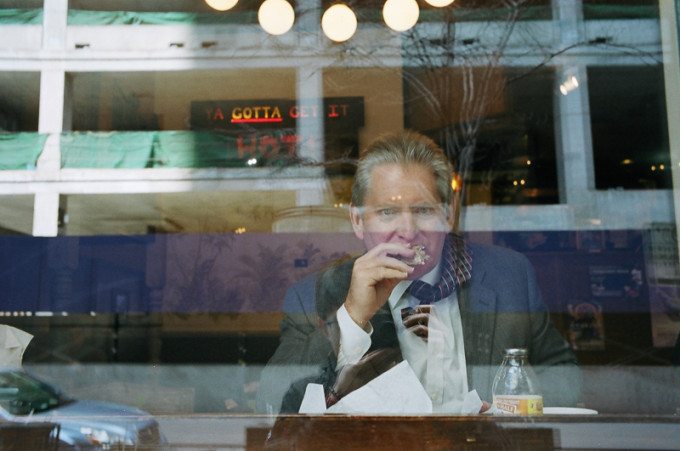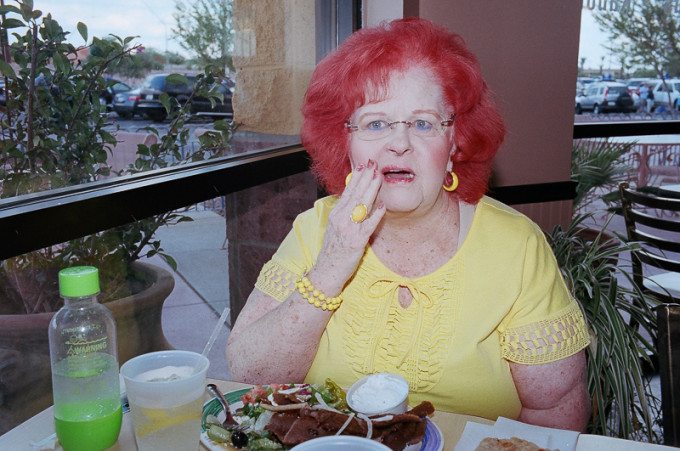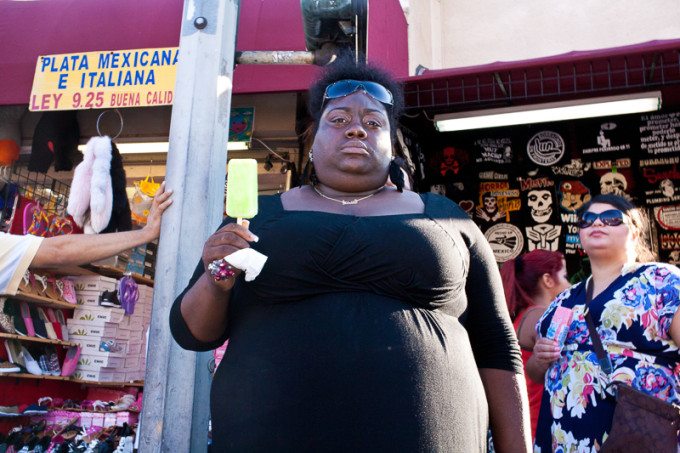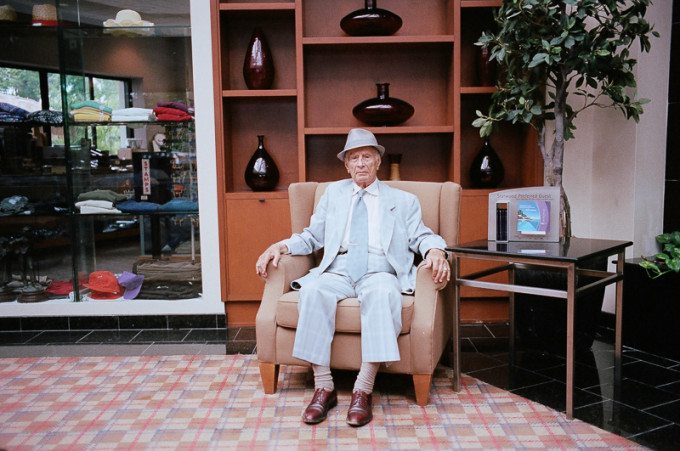
All photographs are copyrighted and used with permission.
Street photography isn’t the easiest discipline. The idea of bringing one’s camera into an uncontrolled situation, where anything can happen and the scene is never the same, can be intimidating, and that’s understandable. What we thought would be helpful is a collection of experiences from several prominent street photographers about this very topic. So jump in and hear from some of the biggest names today.
Nicholas Goodden
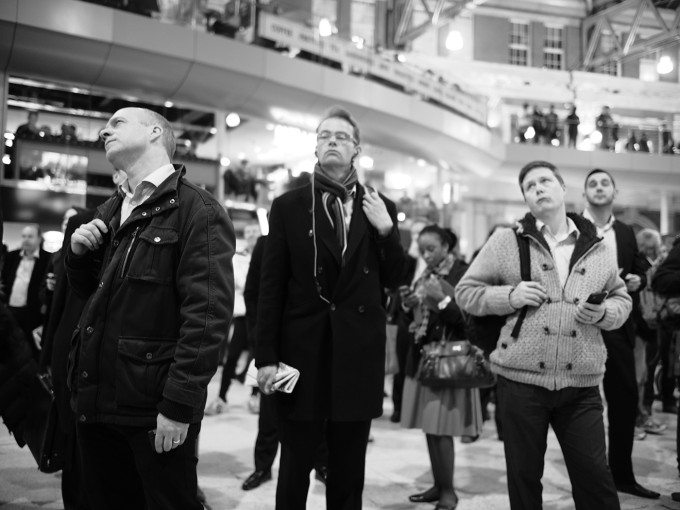
What is street photography? To keep it short and sweet, street photography is photographing people (although some may argue it does not need people) in their everyday lives who aren’t posing for you.
If you take a photo of a street…this is not street photography.
You just have to try and tell a story or capture something exceptional. It’s the biggest challenge: to make your photo interesting to the viewer.
But I’m not too keen to discuss the in-depth definition as it’s just another rule / barrier to stop you shooting.
I prefer to think of myself as an urban photographer rather than a street photographer. Being pigeon holed into street photography is a little too limiting considering it’s only a part of what I do, which I like to refer to as London Urban Photography. I shoot London’s diversity, in urban landscape, in people, architecture.
My photography has a lot of contrasts and layers just like London does.
So going back to street photography, how did I get over the initial fear of shooting people without their knowledge?
Well let’s be honest if I’m going to discuss it. Everyone is different and every photographer will have a different approach.
I wouldn’t call it fear for me but I still get a small adrenaline rush and certain apprehension before I decide to shove my camera within 3 feet of a total stranger and press the shutter.
There are just different ways to do it.
Some will recommend that you use a telephoto lens to gradually conquer that fear from a distance. I disagree. Drop the zoom, go prime lens (35mm or 50mm) and shoot close, it’s the only way to build immunity and build a (short lived) relationship with your subject.
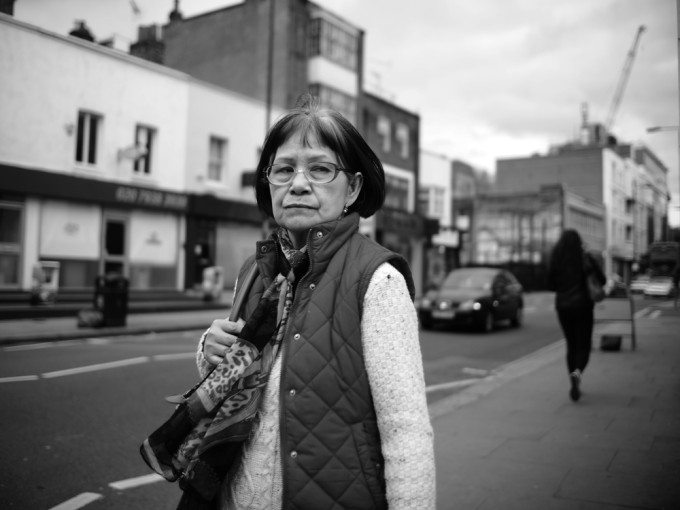
In the same way that if you are scared of the sea, I’m not sure taking a bath will really help.
First, be clever and assess your surroundings. There is always a possibility you’ll get punched, I haven’t but I think it’s good to be street wise and think, “Is this person likely to punch or bite me?”
Then I tend to like busy/noisy streets.
There are a few reasons for that. The first one is that you won’t get noticed as much, you’ll blend in better (also a good reason to carry a small camera, mirrorless type). Another is that it will buffer the sound from your shutter. It may sound silly but in a quiet street, people will sometimes hear it since you are so close from their face.
I once was walking in a quiet street and passed that couple and took the shot. They hadn’t seen the camera and I kept walking when I heard her say to him “Did this guy just take our photo?”. I just kept walking hoping they wouldn’t call the weirdo police.
What works for me is shooting from the hip. When people pass by you and look at you they will normally go for eye contact… Fewer will look at your crotch.
It’s not an easy technique. I admit I used to think people shooting from the hip were just hoping for the best and it was all down to luck and they were just not that good.
For my “The Great Londoners” body of work I shot from the hip for an entire year. What starts by being down to luck becomes fine-tuned and soon enough it’s a perfected technique that requires skill.
I shot this entire series from the hip in manual mode with a 35mm lens (17.5mm on my E-M1). Zone focusing, meaning I had the focus set 3 feet away from me and had to shoot exactly when the person walked at that spot.
It was particularly tricky as I had a moving target, the aperture was wide open at f0.95 to f1.4, leaving me with a very shallow depth of field and therefore very narrow margin for error in getting that focused shot in manual.
So going back to conquering fear, this is how I sometimes do it. I find from the hip a lot easier to get close.
Many people ask me if I ask people I shoot for their permission. My view is that if you spend your time asking for permission in life, you never get anywhere.
The daughter of this man (I shot as part of “The Great Londoners” exhibition I currently have in London) actually saw his photo on my website. What are the odds?
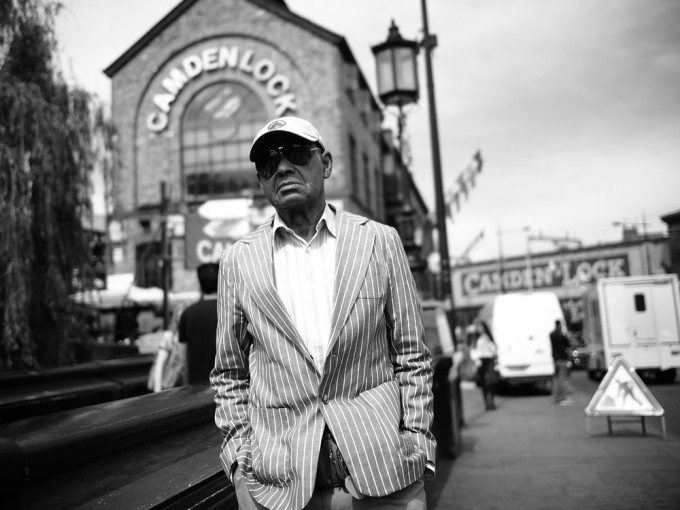
And guess what, she didn’t sue me, no she loved it and asked me to buy the photo (I did give her a 50% discount!). Not everyone will react badly, quite the opposite.
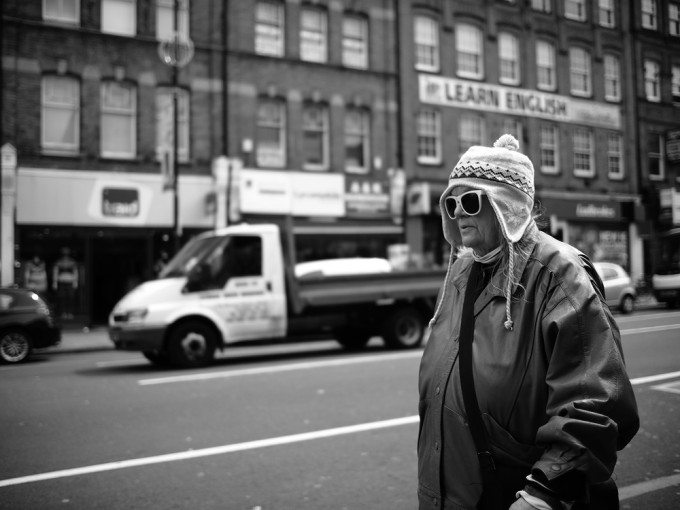
The world isn’t such a bad evil place like the media portrays. Everyone with a camera isn’t necessarily a terrorist either. The first step to feel confident in taking photos is knowing you are not doing anything wrong.
As street photographers we are documenting. In a century or two people will (hopefully) look at our photos and be able to understand what life was in our days. Just the same way we can look at photos of last century and understand better.
Like anything it’s practice that will get you over any mental blocks and generally improve your knowledge of the camera. So just go out and shoot, shoot and shoot some more.
Rinzi Ruiz
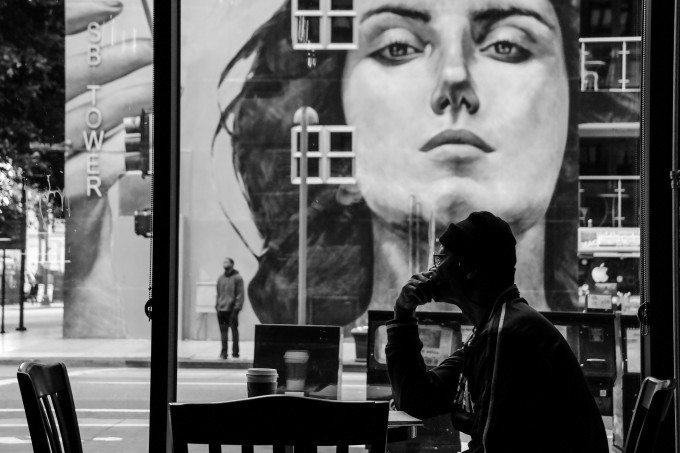
I think that when I started out shooting on the street I tended to be a little self-conscious and definitely inexperienced. Going out to shoot was a bit of therapy for me at the time (and still somewhat is) and I wanted it to be a pleasant and relaxing activity but those self-conscious thoughts would get in the way from time to time. Through going out more and more often and changing my thoughts, my experiences became even more positive.
I put it in my mind that what I’m doing is for fun, that I need to just breathe and relax, that I’m practicing to get better, that nothing negative would happen to me and just focus on getting the pictures I like. I focused more on making my thoughts and energy more positive when I was walking around and that really changed my entire experience. Getting out as often as I could to practice helped a lot and in combination with my beliefs really got me to the point where I was more comfortable with taking pictures of random people. I found that I had more positive interactions when interactions occurred and only a few people reacted in a negative way.
In the 4 years I’ve been shooting the street seriously I’ve only had 4 negative reactions and they were from people I wasn’t’ taking pictures of. It was also how I reacted to their negativity that made the difference. I believe that how you think creates your reality so I just changed my thoughts and feelings to how I wanted. Thoughts of what others think or what they’d do is out of my control and since I can’t read minds I just dropped those negative thoughts and the feelings they produce. It does take a lot of practice to change negative thoughts and feelings to become positive but that is really the key to getting over the fear of shooting on the street and just enjoying the process.
Eric Kim
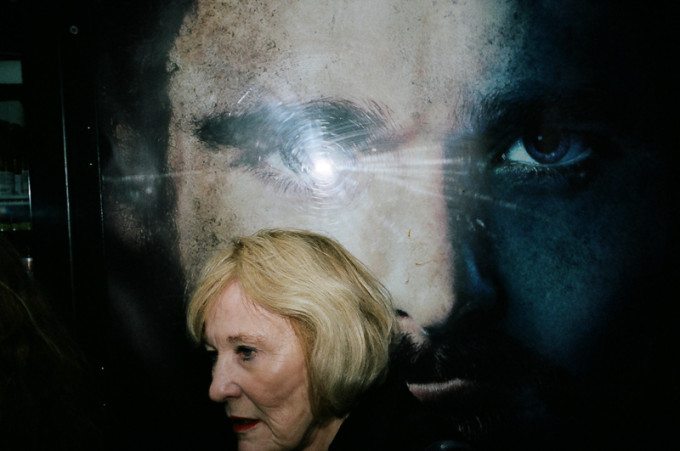
I think street photography is one of the most frightening and difficult genres of photography out there.
There are so many things you have to worry about when it comes to street photography. You have to deal 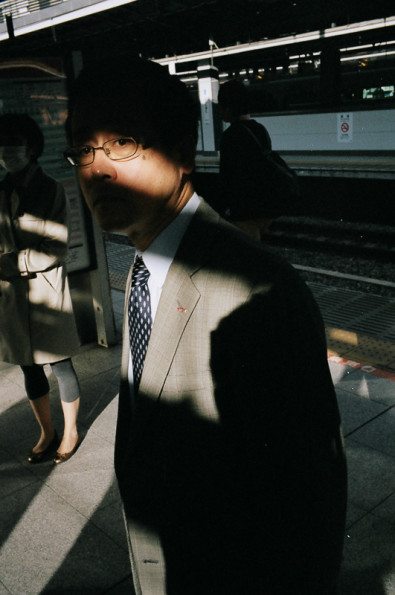 with overcoming the fear of shooting strangers by worrying about if they might yell at you, threaten you with physical violence, or even call the cops on you.
with overcoming the fear of shooting strangers by worrying about if they might yell at you, threaten you with physical violence, or even call the cops on you.
I have shot street photography for around 8 years (started when I was 18, and now I’m 26), and I’ve built up a lot of my confidence over the years.
But don’t get me wrong— the fear of shooting street photography still exists. And I’m glad it exists. It means that I am a human being— if we didn’t have any fear inside of us, we wouldn’t be fully human.
I have also discovered that it is a good thing to have fear when it comes to street photography. Why is that?
I have found the following: whenever I fear shooting a street photograph, it means I have to take the photo.
What do I mean by that?
If you see a great scene, or an interesting person and you have that gut feeling that you want to shoot it (but you have the fear), it is your brain telling you: “I know you are afraid of taking the photo, but you really need to shoot it— because there is something interesting or fascinating you find about the scene.” How to overcome this fear?
I honestly think that street photography is 80% psychological (mental, overcoming your fear of shooting street photography, and overcoming hesitation), and 20% shooting. I think the shooting part of street photography is relatively easy, it is overcoming the fear which is difficult. So here are some strategies I have incorporated to overcome the fear:
1. Identify the fear
First of all, what are you really afraid of?
There are certain things you might fear:
• Fear of getting physically assaulted (having your camera broken, having your face bashed in, etc).
• Fear of being socially judged (people might think you are weird, your friends might judge you negatively for shooting street photography, upsetting people, or breaching their personal space)
• Fear of not making a good photo (being a perfectionist and worrying that the photo you make won’t be the perfect one). I think once you are able to identify your fear, you are able to make much more rational decisions when it comes to street photography.
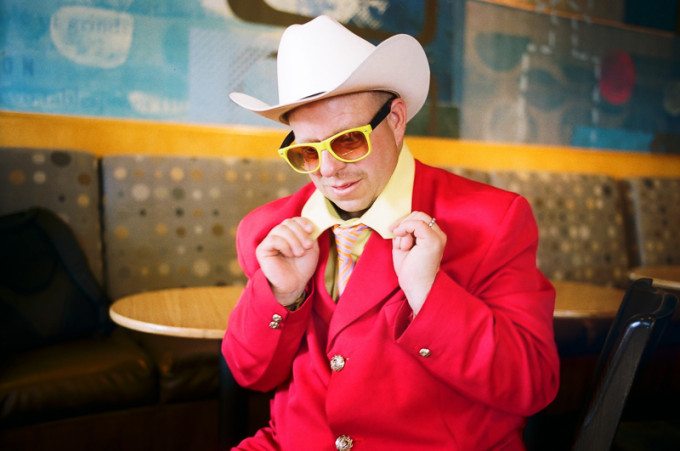
For example:
– Fear of getting physically assaulted
Honestly I have never really heard of any street photographer who died shooting street photography. As scary as street photography may be— it isn’t war photography. We aren’t literally putting our lives on the line shooting street photography.
I haven’t ever heard of a story of a street photographer getting punched, stabbed, or physically injured from just taking photos of strangers on the streets.
Personally I have 1–2 people act physically against me in the last 8 years. I have been shoved once or twice, and had people try to take my camera from me. But this is the odd crazy person— and I have probably gotten into more car accidents over the last 8 years (than had confrontations in street photography).
But according to my rough statistics, for every 100 photos of strangers I photograph, I only get 1–2 negative reactions (and these are more of people yelling at me and getting upset, then getting physically violent).
Also realize it is your legal right to take photos of strangers in public. And if people do physically assault you, they are at fault and you can technically sue them. So if they touch you, you sue them, and you buy a new Leica! Everybody is happy.
No but seriously, don’t be so worried about physical violence in street photography. It rarely ever escalates this far— most people are quite adverse to starting physical fights. People talk a lot of shit with their words, but rarely with their fists.
– Fear of being socially judged
This is something you are going to have to deal with as a street photographer. People will judge you— as it is against the social norm to photograph a stranger without his/her permission.
But so what? Who cares? If you are a “weirdo”— who gives a shit? I would rather live a life that is true to myself— and do what I love and am passionate about, without worrying about how others are judging me.
And furthermore, realize that as a street photographer, you are doing a good thing for society. You are documenting the world around you, documenting history, and capturing the beauty in the mundane.
So if someone judges you for taking a photo of a stranger, just smile and don’t take it personally.
– Fear of not making a good photo
I also know a lot of street photographers who are perfectionists, and the reason they hesitate before shooting a photo is because they are worried that they won’t make a good street photograph.
Therefore one of the best ways to overcome this is to not worry so much. Don’t think that every photograph you shoot has to be a masterpiece. Just shoot from the gut. If you see something that you might find interesting, don’t think too much— just shoot.
You don’t shoot masterpieces every single image. A lot of making “good images” is in the editing phase (choosing your best images).
Most street photographers I talk to (who are on the top of their game) admit to only making 1 good street photograph a month, and 1 great street photograph a year. If you aim to get those numbers, you are on track. Remember once again, how difficult street photography is.

2. Start off by asking for permission
I think one of the best ways to overcome your fear of shooting street photography is to ask for permission.
Just because you ask for permission in street photography doesn’t mean that it “isn’t street photography.” The best street photographs tend to be candid, but I have also seen great street photographs shot in history that are with permission (implicit or explicit). For example, look at the photos of Diane Arbus, Vivian Maier, or William Klein.
So an example you can do is look for a stranger you find interesting and say, “Excuse me, my name is (insert name) and I am a photography student. I think you look interesting because (x,y,z) and I would love to make a portrait of you. Would you mind if I made a portrait of you?”
This is a great beginning script because by introducing yourself and sharing that you’re a photography student, it immediately disarms people. And you’re not lying either— we are all students in photography (we are all learning).
Furthermore, by identifying what you find interesting about them— they will better understand why you want to make a photo of them, and your intentions. This signals that you aren’t just some weirdo, some pervert, or spy for the police.
Lastly, notice how I wrote “make a photo”. The difference between “taking” a photo and “making” a photo is intent. “Taking a photo” is almost like stealing someone’s soul. “Making a photo” is much more creative— and collaborative. In America, we don’t say “make a photo” (actually this is what a lot of Europeans say) — and a lot of people are confused when they hear this phrase. But it is much more intriguing— and professional.
In the street photography workshops that I teach, I also give students a “5 yes, 5 no” assignment in which their assignment is to overcome their fear of rejection by approaching a bunch of strangers and getting 5 strangers to say “yes” to having their photo taken, and 5 strangers to say “no” to have their photo taken.
I think one of the biggest fears in street photography is the fear of rejection— not the rejection itself.
Therefore if you train yourself to be comfortable being rejected — you will build a thicker skin and also build more confidence.
Now whenever I see someone interesting that I want to ask for permission to photograph them, I think to myself: “The worst that they will say is no.”
So if you are scared to take a photo of someone, and scared that they might be offended or get angry, start off by building your confidence by asking for permission.
3. Imagine that they want to have their photo taken
I know a lot of street photographers who hate having their own photo— and they project that onto the world by assuming that everyone else doesn’t like to have their photo taken either.
But I think this is the wrong assumption— because there are some people out there who actually like having their photo taken.
For example, I personally love being photographed. Therefore I fool myself into thinking that everyone else out there likes being photographed.
Now this isn’t necessarily the case— but I find that the vision I project upon the world becomes a reality.
Because I assume that everyone wants to be photographed, I will photograph strangers with a smile on the face (not in a creepy way), and do it with love and honesty. People then generally react very positively to me, and I always try to tell people “thank you” after photographing them (candidly and without permission).
Also as a quick side-note, I shoot about 80% of my street photography without permission, and 20% with permission.
Anyways, if you have a positive outlook of the world and of strangers (assume that everybody is a good person and friendly), people will react that way. If you assume others don’t like being photographed and will get pissed off, they will get pissed off and react negatively.
4. Smile and say “thank you”
One of the best ways to overcome your fear of shooting street photography (and reducing conflicts) is simply by smiling.
Smiling is one of the most contagious human actions. If you smile at someone, they will smile back at you almost 99% of the time (practice this with a stranger, I dare you).
In psychology there has been a lot of study of “mirror neurons” in which we copy what actions others do unto us. So for example, it is physiologically wired that if someone smiles at us, we will smile back at them.
However I know a lot of people who say, “Oh sure, you could probably smile in America or city X, but it would never work in my city or country.”
I think this is the wrong idea to have— I think as human beings we are much more similar than dissimilar. Sure we have different cultural norms, but our biology (responding positively to smiling) often overpowers it.
I also think a lot of strangers are suspicious of us street photographers shooting photos of them without permission. They are worried of questions like, “Why is that stranger taking my photo? What will they do with my photograph?”
By smiling and saying “thank you” after taking a photo of someone, it instantly signals to them that you aren’t an enemy or someone trying to do something malicious. Rather, that you are someone who is harmless and can be trusted.
Nowadays even when I’m not shooting street photography, I will try to smile, wave, and say hello to strangers. I have found this a great way to build up my confidence in street photography— and I value a lot of these random conversations I have with strangers.
Even when there is awkward silence between me and a stranger (when in an elevator, waiting in line, etc) — I always try to break the ice and just say something like, “How is your day going?” Believe it or not— most people open up and are quite happy to strike up a conversation.
5. Don’t shoot from the hip
One of the practical tips I have to overcome your fear of shooting street photography is to not “shoot from the hip” (shooting in a sneaky manner with your camera at waist-level and not looking through the viewfinder).
I used to shoot a lot from the hip when I started off in street photography, but I have stopped since then. Why? I found that shooting from the hip actually hurt my confidence in street photography. I shot from the hip because I was afraid to make eye contact with strangers, to confront people, and it became a barrier for me to actually bring my camera up to my viewfinder.
Also I think that shooting from the hip is sneaky— and if you get caught from shooting from the hip (or being sneaky), people will be even angrier than if you were more open and honest by shooting with the viewfinder to your eye.
So shoot openly, honestly, and don’t hide the fact that you are shooting. After all, you’re doing nothing wrong.
6. Practice positive psychology
I know this sounds cheesy and new-agey, but practicing positive psychology is a good way to re-wire your brain to build confidence in street photography.
Whenever I am out shooting, I try to tell myself, “I am doing a good thing by shooting street photography. I am confident. I am having a great day. I am fearless. I won’t hesitate when shooting on the streets.”
By practicing these thoughts in my mind, my actions follow. By having positive thoughts— I actually become more positive and confident physically and mentally.
Overcoming your fear of shooting street photography is one of the most difficult things. It takes a long time. Even after 8 years of shooting street photography, I still face “the fear.”
But “the fear” isn’t something to be avoided— it is your friend. It is something that reminds you that you are a human being, and that you want to take a certain photograph.
Ultimately, whenever I have that gut feeling of fear in my stomach when I want to take a photograph, I don’t think too much— I just click the shutter. You don’ want to overanalyze and overthink a situation. When you’re scared, click.
So when you’re on the streets, shoot openly, honestly, and always carry a big smile on your face. Practice really does make perfect, and the more you go out and shoot— the more confident you will become.


